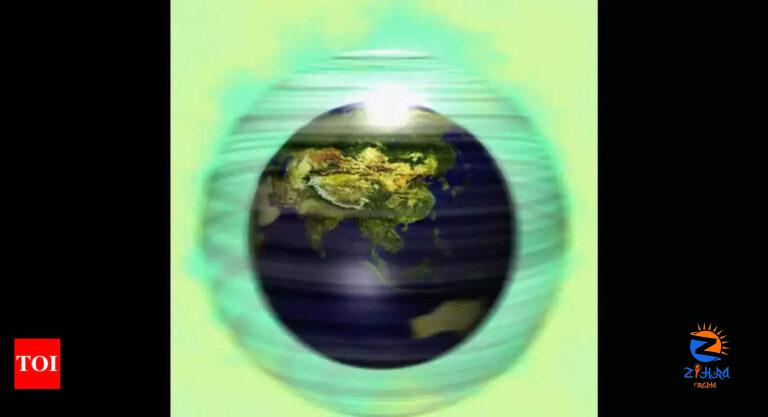
[ad_1]
India has been marking this important occasion since 1995. The theme for world ozone day 2024 is “Montreal Protocol: Advancing Climate Actions,” which underscores the Montreal Protocol’s vital role in both ozone layer protection and broader climate action efforts.
World ozone day: Origin and significance
World ozone Day originated in the 1980s when evidence revealed significant depletion of the ozone layer due to human activities. The ozone layer, located in the Earth’s stratosphere, is essential for protecting life by absorbing harmful UV radiation.
The Montreal Protocol, adopted on September 16, 1987, was a pivotal international agreement to phase out ozone-depleting substances like CFCs and HCFCs, leading to notable improvements in ozone recovery.
Understanding ozone layer
Ozone (O₃) is a reactive gas composed of three oxygen atoms. It can be either natural or man-made and is found in the Earth’s stratosphere, which extends from 15 to 30 kilometres above the Earth’s surface. The term “ozone hole” refers to regions where the ozone layer has been significantly depleted, allowing harmful UV radiation to reach the Earth’s surface.
In the stratosphere, ozone is produced naturally through the interaction of solar UV light with molecular oxygen (O₂). Conversely, ground-level or tropospheric ozone forms primarily through photochemical reactions involving volatile organic compounds (VOCs) and nitrogen oxides.
Key facts about ozone layer
- Ozone is a pale blue gas with a distinctive odour.
- The concentration of ozone in a column of air above the Earth’s surface is measured in Dobson Units (DU).
- Ozone is continuously formed in the high atmosphere by UV radiation interacting with atmospheric oxygen.
- The average ozone concentration is approximately 300 DU, with lower levels at the poles and higher levels at the equator.
- The ozone hole reached its largest recorded size of 28.4 million square kilometres in September 2000.
Ozone layer depletion
Ozone layer depletion is observed in both hemispheres, particularly over Antarctica and the Arctic, with a more pronounced impact in Antarctica. The formation of the ozone hole is closely linked to stratospheric temperatures. When temperatures fall below -78°C, stratospheric clouds form, exacerbating ozone depletion.
Certain consumer products and industrial activities release “halogen source gases” into the atmosphere, which weaken the ozone layer. For example, chlorofluorocarbons (CFCs), used in air conditioning and refrigeration, break down into chlorine atoms that deplete ozone. Similarly, halons used in fire extinguishers contain bromine atoms that also harm the ozone layer.
The role of the Montreal protocol
Adopted on September 16, 1987, the Montreal protocol is a landmark environmental agreement aimed at regulating the production and consumption of ozone-depleting substances (ODS). It mandates a phased reduction of ODS with specific timetables for both developed and developing countries, making it a critical tool in addressing ozone depletion.
Under the Montreal protocol, hydrochlorofluorocarbons (HCFCs), used in refrigeration and air conditioning, have been phased out due to their harmful effects on the ozone layer. These substances have a global warming potential around 2,000 times that of CO₂.
Universal ratification of Montreal protocol
On September 16, 2009, the Montreal protocol and the Vienna Convention became the first UN treaties to be universally ratified, marking a significant milestone in global environmental governance.
Hydrofluorocarbons (HFCs) were introduced as alternatives to CFCs and HCFCs. While HFCs do not deplete the ozone layer, they have high global warming potentials. In October 2016, the Montreal Protocol’s parties agreed to phase down HFCs, aiming for an 80-85% reduction by the late 2040s.
Current status of the Montreal protocol
Since the implementation of the Montreal protocol, the condition of the ozone hole has improved. Recent assessments suggest that the ozone layer will recover to its 1980 levels over Antarctica by 2066, over the Arctic by 2045, and globally by 2040. This recovery also contributes to mitigating climate change, as many ozone-depleting substances are potent greenhouse gases.
World ozone day celebration in India
In India, the Ministry of environment, forest and climate change celebrated the 30th world ozone day in New Delhi last week. The event was presided over by Leena Nandan, Union Secretary of the Ministry of Environment, Forest and Climate Change, emphasising the ongoing commitment to both ozone protection and climate action.
The theme for world ozone day 2024, “Montreal Protocol: Advancing climate actions,” highlights the Montreal Protocol’s crucial role in protecting the ozone layer while advancing global climate action.
[ad_2]
